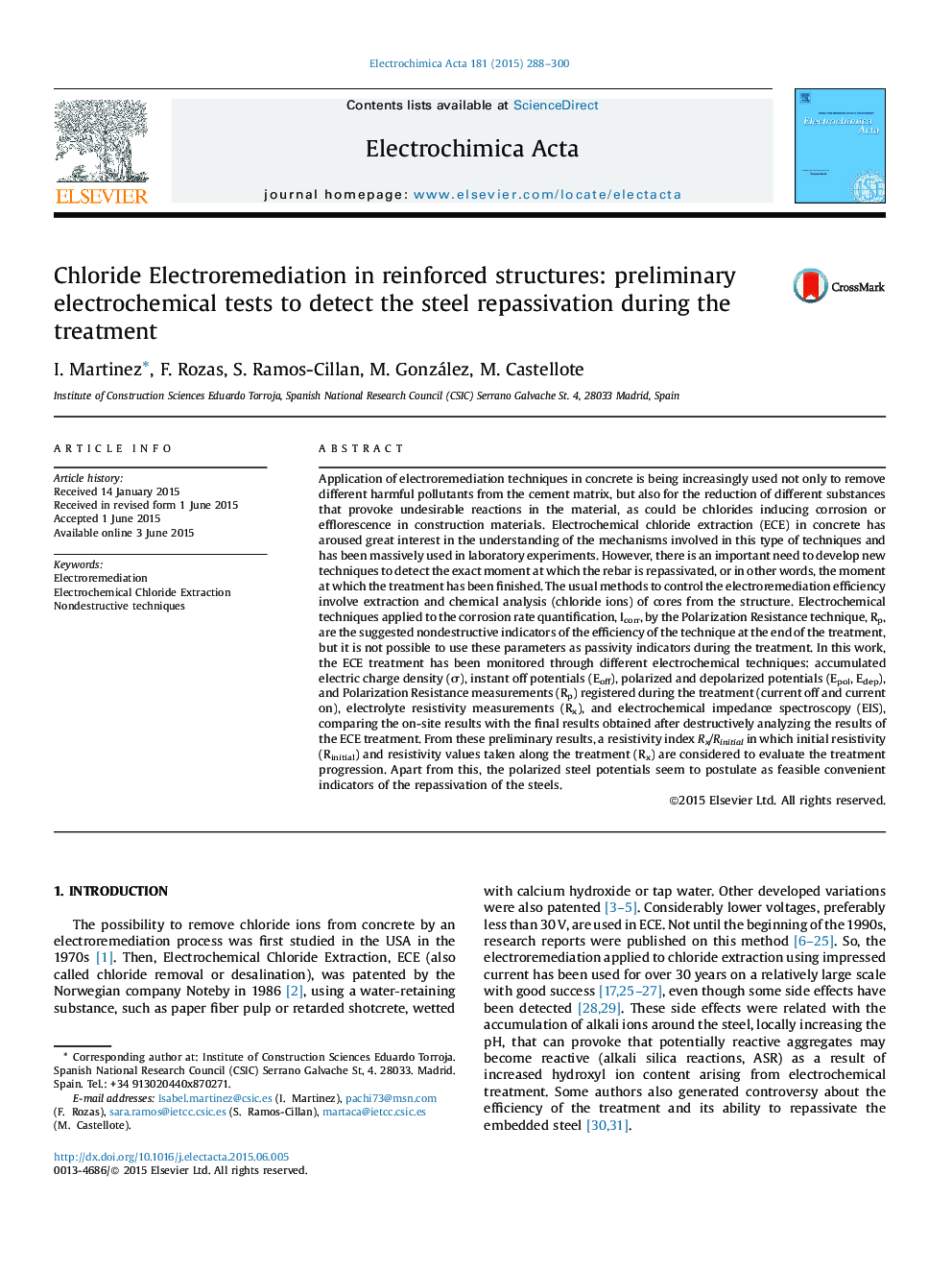| Article ID | Journal | Published Year | Pages | File Type |
|---|---|---|---|---|
| 183498 | Electrochimica Acta | 2015 | 13 Pages |
Application of electroremediation techniques in concrete is being increasingly used not only to remove different harmful pollutants from the cement matrix, but also for the reduction of different substances that provoke undesirable reactions in the material, as could be chlorides inducing corrosion or efflorescence in construction materials. Electrochemical chloride extraction (ECE) in concrete has aroused great interest in the understanding of the mechanisms involved in this type of techniques and has been massively used in laboratory experiments. However, there is an important need to develop new techniques to detect the exact moment at which the rebar is repassivated, or in other words, the moment at which the treatment has been finished. The usual methods to control the electroremediation efficiency involve extraction and chemical analysis (chloride ions) of cores from the structure. Electrochemical techniques applied to the corrosion rate quantification, Icorr, by the Polarization Resistance technique, Rp, are the suggested nondestructive indicators of the efficiency of the technique at the end of the treatment, but it is not possible to use these parameters as passivity indicators during the treatment. In this work, the ECE treatment has been monitored through different electrochemical techniques: accumulated electric charge density (σ), instant off potentials (Eoff), polarized and depolarized potentials (Epol, Edep), and Polarization Resistance measurements (Rp) registered during the treatment (current off and current on), electrolyte resistivity measurements (Rx), and electrochemical impedance spectroscopy (EIS), comparing the on-site results with the final results obtained after destructively analyzing the results of the ECE treatment. From these preliminary results, a resistivity index Rx/Rinitial in which initial resistivity (Rinitial) and resistivity values taken along the treatment (Rx) are considered to evaluate the treatment progression. Apart from this, the polarized steel potentials seem to postulate as feasible convenient indicators of the repassivation of the steels.
